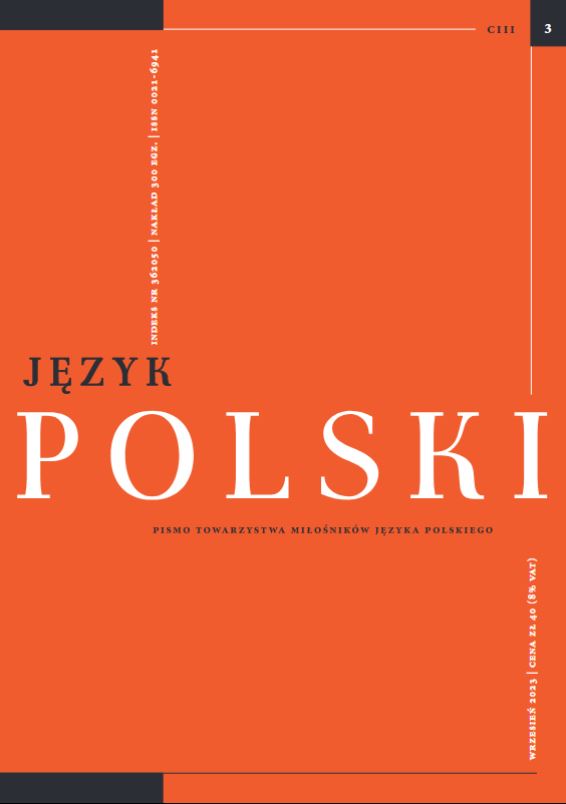Kobiety w nazwach polskich ulic nadanych
w latach 2018–2022: stagnacja czy zmiana?
Female namesakes of Polish streets named in the years 2018–2022: stagnation or change?
Author(s): Małgorzata Rutkiewicz-Hanczewska, Justyna B. WalkowiakSubject(s): Gender Studies
Published by: Towarzystwo Miłośników Języka Polskiego
Keywords: street names; women; commemorative names; namesakes; critical toponymy;
Summary/Abstract: The article aims to assess the rate of increase in the number of street names motivated by female figures, based on the analysis of 3,329 hodonyms entered into the TERYT database in the years 2018–2022. The col- lected data was juxtaposed against the data from a pilot study published in 2018, covering twelve Polish cit- ies with the largest number of streets, which can be treated as a representative research sample. Our results clearly indicate an increase in the dynamics of creating street names based on women’s names (from 11% to nearly 16%). Undoubtedly, the factors conducive to the formation of feminine hodonyms are cultural and social, i.e. gender balance policy, concern for parity in the contemporary socio-political space, as well as the 100th anniversary of granting voting rights to women, marked by the Polish parliament declaring the year 2018 as the Year of Women. Our analysis also shows an increase of historical namesakes, especially of the secular ones (at the expense of those with religious motivation, such as saints). The top ten positions of the female pantheon remain rather stable and dominated by the literary profession (Maria Konopnicka, Eliza Orzeszkowa, Zofia Nałkowska, Maria Dąbrowska); there is, however, a marked rise in the ranking of poet Wisława Szymborska, the 1996 Nobel Prize winner.
Journal: Język Polski
- Issue Year: 2023
- Issue No: 4
- Page Range: 91-108
- Page Count: 18
- Language: Polish

